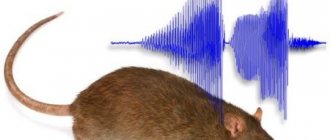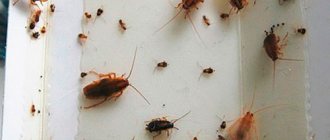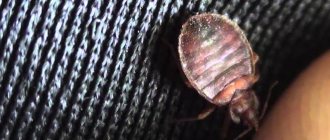The easiest way to get rid of the most common, but far from the most favorite household pest, is a mousetrap: you can make one with your own hands using available materials. Ease of operation, ease of manufacture, the ability to use unnecessary trash for noble purposes and high efficiency allow us to classify homemade mousetraps as folk art.
- How to catch a mouse in an apartment Baits for mousetraps
- Step 1
- Step 1
- Step 1
How to catch a mouse in an apartment
Man is the king of nature. Therefore, he must cope with his “subordinates” easily and naturally. Moreover, if among the latter there are small and dangerous rodents. They may not eat much, but they spread serious diseases.
A cat knows better than anyone how to catch a mouse in an apartment. But she doesn’t share her secrets, and besides, cats are poorly controlled and very unstable. That is why homemade mouse traps can give any mustachioed predator a run for its money.
Of course, you can buy a mousetrap in a store. But for a resident of Russia, the very thought of buying such a simple thing comes to mind only after a complete loss of creative abilities or after being included in the Forbes list.
Important:
The mouse is a cautious but stupid animal. Don't think of him as a wise scout capable of avoiding camouflaged traps. Rodents live by instinct and this is their weak spot.
Homemade mousetraps benefit from being loaded with the right bait.
Mouse trap baits
The mouse has very poor eyesight, but its sense of smell is simply phenomenal! The physiology of mice has evolved in such a way that the number of neurons in its olfactory bulb constantly increases throughout life. This occurs due to migration from the subependymal zone of the ventricles of the brain.
The mouse is very well versed in odors, can identify them and has a clear gradation according to the degree of their attractiveness. In critical conditions, the mouse can feed on candles and soap. If possible, the attractiveness of baits should be arranged in the following sequence:
- Sunflower seeds;
- Nuts (including peanuts);
- Meat (fat);
- Bread;
- Chocolate;
- Cheese.
If desired, you can experiment with baits. To do this, you will need to make your own mouse traps of the same design, which use different products. After each successful operation, you need to note which bait attracted the rodent.
In a couple of weeks, you will have a systematic catalog of baits.
TIP: baits can be combined to enhance their attractiveness.
How to get rid of mice in a private house
Owners of private houses often face such a problem as the appearance of rodents. They can ruin a lot of nerves by systematically destroying food, wooden elements in the house and personal belongings of the owner of the building. As soon as you become a victim of a mouse attack on your home, you need to mobilize all possible means to counteract the mice.
Small rodents can be dangerous to humans. They are ideal distributors of many dangerous diseases, and therefore, if you do not take any action to combat mice, you can face serious problems.
Currently, there are several methods of dealing with unwanted guests in a private home.
- Mechanical methods of struggle. This technique involves the use of a variety of technical devices that will help rid your home of rodents. These are a variety of traps, traps and electronic repellers.
- Chemical control agents. This method involves the use of chemicals and other toxic substances that have a lethal effect on rodents.
- Domestic cat. Your favorite pet can save your home from a mouse attack.
Why you should make your own mousetrap
The design of homemade mousetraps is so simple that the process of making them is more like creative work. It is not as exciting as sculpture or painting, and it is very difficult to imagine yourself in the place of Rembrandt or Michelangelo. But it’s very easy to become like Kalashnikov or Manerheim.
The most attractive thing about making your own mousetraps is the opportunity to experiment by making improvements to classic designs. Moreover, even if the change did not bring the expected effect, a catastrophe with human casualties will not happen in any case.
A mousetrap is not an airplane or a submarine! Experiments are welcome.
What to do with bats?
What to do with bats if they fly into your house? It is not recommended to kill them for several reasons:
- Many species of bats are listed as endangered in the Red Book.
- Animals are carriers of diseases.
You need to carefully cover the animal with a towel or any cloth, take it and throw it out the window. You can use a broom and dustpan. The bat is very poorly oriented in a bright room; it is likely that it will try to hide in the darkest possible place. You should not harm the animal; folk signs say that in this case, misfortune awaits the person.
Attention! Bats usually fly indoors for warmth. It is advisable to keep the windows closed if there is a high population of these animals in the area.
Do-it-yourself mouse traps: materials and principle of operation
You can make a mousetrap with your own hands even from the garbage that is thrown away. You just need to apply some ingenuity and creative ingenuity.
Too lazy to make a mousetrap yourself?
Read our review of the best ultrasonic mouse and rat repellers. Rating of the five best models with reviews from owners.
Most models of homemade mousetraps use the same principles and techniques. Depending on how to make a mouse trap, according to the operating principle of most models, they should be divided into two categories:
- Gravitational;
- Spring.
In the first case, the trap is triggered due to a change in the stability of the system after the rodent enters the control zone (example No. 3) or its activity in the prepared place (examples No. 1 and 4).
Spring models use the elastic energy of the working fluid (example No. 3). Moreover, a spring, in this context, is a collective name. A lever with a counterweight can also act as an accumulator of elastic energy.
The homemade mousetrap models described below show both types of designs.
Ultrasound
This is a modern, humane, harmless and effective remedy. Ultrasound is not audible to humans, but depresses the nervous system of rodents. Because of this, rodents lose their appetite, experience disorientation, shock, and stop reproducing. In order to survive, they leave premises where ultrasonic rodent repellers operate.
| Tornado 200 | Typhoon LS 800 | Grad 550UZ |
DIY mousetrap from a plastic bottle
A homemade mousetrap made from a plastic bottle is extremely simple and effective. And most importantly, it is absolutely free.
To make it you will need a PET bottle with a volume of more than 2 liters. A smaller capacity can make it difficult for the trap to trigger, due to too little room for the victim to maneuver.
Step 1
The bottle is cut into two unequal parts. The height of the lower part is ⅓, and the height of the upper part is ⅔ of the total length.
In the lower part, at a distance of 4-5 cm from the bottom, a round hole is cut out, with a diameter of a 5-ruble coin.
Step 2
Opposite the entrance, a puncture is made using a wire.
Step 3
We bend an L-shaped guard from the wire.
Step 4
We place the bait on the guard.
Step 5
We insert a guard with bait into the puncture and lower the upper part of the bottle inside.
Step 6
The baited wire is pushed inside the bottle so that the smallest tip sticks out.
A plastic bottle mousetrap is triggered if a mouse, having climbed through the hole into the trap, becomes interested in the bait and begins to pull it. The holding tip of the wire will move and the top of the bottle will move down, blocking the rodent's exit.
TIP: Do not screw the cap on the bottle all the way. In this case, the moving part of the bottle will fall faster due to the lack of compression effect. But you can’t remove the lid completely. Since the animal locked inside can knock over the bottle and get out through the neck.
Making a mousetrap from a plastic bottle using video
Mice in the cellar, basement, attic, garage
Mice in the cellar, basement, under the roof in the attic, in the garage, when they are completely tortured, can be driven out in any convenient way:
- poisons;
- mousetraps;
- folk remedies.
If it is possible not to destroy rodents, but to scare them away, you can give preference to an ultrasonic repeller. During operation, this device will produce sounds that are unbearable to mouse ears. As a result, mustachioed pests will quickly leave the room. It is best to use such a device when no one is at home, since a person also picks up some sounds, and they can cause him discomfort. That is why the repeller is ideal for fighting rodents in the attic, basement, cellar, shed and other non-residential premises, eliminating the animals forever.
You can get rid of animals from a garage or warehouse using a repeller in an average of two weeks. To achieve success, it is recommended to use the following recommendations:
- free the room as much as possible from unnecessary items;
- When choosing a device, consider the area of the territory;
- remove water and food supplies so as not to leave the animals any chance;
- consider the number of mice: the more there are, the more ultrasonic repellers you will need.
You can choose repellents such as “Tornado-200”, “Tornado-400”, “Tornado-1200”. The number in the name of the repeller indicates the maximum area on which this device will be effective. You can choose an analogue called “ElectroCat” from another manufacturer.
You can make a homemade animal trap in your garage or shed. You will need a bottle into which you need to pour a little sunflower oil. If an animal falls into a trap, it will not be able to get out, since its paws will slide along the wall of the bottle. Don't forget to put some tasty bait so that the mouse will come to the trap.
Pests in the car
Car pests are a rare problem, but they do occur. You can’t just drive out annoying animals. You need to smoke them. This can be done in one of the following ways:
- Drive the car into the garage and leave it on. Close windows and garage doors tightly. Return to the premises in half an hour; the impudent “tenants” must leave the vehicle.
- Place the car where the animals have settled in front of another vehicle so that the smoke from the exhaust pipe gets into the mouse habitats in the car. Provide smoke exposure to mouse concentration areas for 10-15 minutes. The animals must retreat from the car.
How to make a mouse trap from a jar
For this trap, you only need a glass jar with a capacity of 3 liters and a special bait. A mousetrap from a jar will function flawlessly precisely when using a certain filler - husks (husks from sunflower seeds).
TIP: for their best attractiveness, it is recommended to sprinkle them with fragrant sunflower oil.
In a practical sense, you won't have to do anything. It is necessary to fill the jar with a layer of 3-5 cm of husks and place a board on the neck, along which the rodent can quickly get to the source of the smell.
Once inside the jar, the mouse can no longer get out. And it’s the husk that helps keep it there!
Mice jump quite high. But for a good jump, a powerful push from a solid base is required. The seed husk layer is very loose and mobile. You can’t just push off from it, you can’t even stand on it. The rodent will fall through at the slightest movement.
This design has its advantages:
- The husk does not spoil;
- Mice don't eat it;
- The product does not require cocking and can function without maintenance for some time (the duration depends on the abundance of rodents);
- Performance is maintained even at sub-zero temperatures.
A jar trap is convenient to use in the cellar.
Folk remedies for mice and rats for independent control of rodents
As a result of the introduction of the achievements of chemistry and physics into practice, many new products are constantly appearing on the market for means of controlling domestic rodents.
At the same time, owners of private households often rightly prefer folk remedies in the fight against mice and rats, which have been tested for centuries, have absolutely no harmful effects on people and are very effective.
We recommend: new generation electric mousetrap Yastreb PP, more details
Is it always necessary to control rodents?
Neighborhood with rats and mice sometimes does not really bother the owners if the number of animals is small and they appear only on the site, but not in the house.
The danger of such a neighborhood cannot be underestimated. Domestic rodents, even with a short and small stay in the home, can cause various diseases in humans.
What diseases do rodents carry?
- Bubonic plague is a disease that can be infected by rodent bites or by exposure to pests living on animals;
- Infection with hemorrhagic fever occurs by inhaling dust from the space in which rats and mice were located;
- Direct contact with a sick animal significantly increases the likelihood of infection;
- Leptospirosis can develop through contact with water, products touched by sick rodents;
- Tapeworm larvae can be transmitted to humans through food and water;
- Murine typhus is transmitted only through direct contact with infected rodents. The risk of developing the disease from bites is especially high;
- Pseudotuberculosis can manifest itself in humans by eating raw foods that have been stored for a long time in basements or pantries with rodents.
Diseases caused by rodents can be cured with modern drugs. It is better not to test the possibilities of medicine.
Fighting rats at home using folk remedies is available to everyone. Without spending a lot of time and money, you will achieve peace of mind and confidence in the safety of yourself and your family members.
Where do rodents come from at home?
Rats and mice, whose existence dates back thousands of years, as a result of long evolution, have acquired a tremendous thirst for life, ingenuity, and determination.
They can appear in your home for a number of reasons:
- Rodents are attracted to the smell of food. There is no point in setting up branches of food warehouses in houses and apartments. Buy the quantity of products that you will need in the foreseeable future. Habits formed in the long past are no longer appropriate;
- Mice and rats can make holes in almost any wall. When carrying out general cleaning, do not be lazy, move away all the furniture, check the integrity of all partitions and walls. In this way, it is possible to exclude the possibility of rodents entering apartments from basements, entrances, and adjacent areas;
- Rodents can enter residential areas when large goods are delivered from warehouses. If furniture has been delivered to you, pay attention to the integrity of the packaging and monitor the unloading of goods;
- The good ability of rodents to move on both horizontal and vertical surfaces allows them to climb ventilation ducts. Make sure that all ventilation openings are covered with grilles.
- In the private sector, rats often appear if cattle and pigs are raised in the household!
If precautions are taken, the likelihood of rodents appearing in your home is minimal.
Traditional methods against rats and mice
There are many ways to control rodents using synthesized substances. People with small children or increased allergic sensitivity who do not want to deal with chemical poisons want to know how to get rid of mice in an apartment forever using folk remedies.
The desire is quite justified. Folk remedies for fighting rats and their smaller “relatives” are safe for people with any immune system and age. There are many methods.
When burning grass, bushes and wood waste with a high potassium content, ash with slightly alkaline properties is formed. Such raw materials include:
- Sunflower;
- Buckwheat;
- Deciduous tree species.
If a bucket of the resulting ash is scattered in a thin layer in places where rodents gather, then when they move, the powder will cling to the animals’ paws and cause irritation. Rodents will be forced to lick their paws.
As a result, alkaline particles will enter the stomach and cause slow poisoning of rodents. The method is remarkable for its absolute harmlessness to the owners. The only trouble is that the ash crumbs are pulled away by animals.
Lime
Folk remedies against rats are always available and inexpensive. At home there is always lime: slaked or quicklime. It is better to use quicklime, mixed with a small amount of sugar.
Rodents will probably want to eat the sweet mixture. Once in the stomach, lime will react with the water of gastric juice. The interaction involves the release of a large amount of heat, which is incompatible with life.
Rodents will die from internal thermal burns, which will be aggravated by leaching of the mucous membrane due to the influence of the resulting alkali.
Broken glass
Rodent control in a private home can be carried out with the parallel disposal of glass waste, which inevitably accumulates on the farm.
When building outbuildings for poultry, experts advise laying a layer of crushed stone mixed with broken glass on the surface of the ground in advance.
Sharp edges injure animals. Taught by bitter experience, they are afraid of such coverings and leave without tempting fate.
Broken glass can be added to mixtures to seal holes that rodents have already made in walls and floors. The effect will be noticeable.
Marsh rosemary
Folk remedies for mice in the apartment usually have a milder effect. Previous methods are not always applicable in multi-storey buildings.
A wonderful effect was noticed when sprigs of marsh wild rosemary were placed in rooms. Domestic rodents cannot stand the smell of this plant and avoid the room.
Black root officinalis
The plant is called medicinal for a reason. It contains active chemicals.
Successfully used as a folk remedy for mice:
- Plants dried in the fall should be placed in areas where rodents gather. They cannot stand its smell and will soon all leave the room;
- You can use a decoction prepared by brewing half a kilogram of a wilted plant in a liter of boiling water. The broth should be sprinkled on places favored by rodents. The effect will not be long in coming;
- For spraying, you can use an alcohol tincture of one large plant in 1 liter of vodka. The resulting extract should be used to treat areas where mice are frequented. The alcohol will evaporate, the active ingredients will remain and will scare away the rodents.
Homemade mouse trap from a bucket of water
The design of a mousetrap made from a bucket of water stands out from all other models in that it can be left without maintenance for several months. And with a small upgrade, it will function even during severe winter frosts.
The main part of this trap is a wire frame with a movable ladder made of a plastic panel, which easily rotates inside the structure.
The dimensions of the frame will depend on the diameter of the bucket. So:
Step 1
Bend an elongated U-shaped frame 5 cm wide from aluminum wire, the length of which will be 12-15 cm greater than the diameter of the bucket. Bend the closed end of the frame at an angle of 90˚. It will fix the structure.
Step 2
Make a circular loop with each of the open ends of the frame around a nail. The holding loops should be approximately in the middle of the wire blank.
Step 3
Using a construction knife, cut a small piece of material from a plastic panel so that its width is 1 cm narrower than the clearance of the wire frame. Stepping back 1-1.5 cm from the middle, drill (or pierce with a heated nail) a through hole in the plastic drain.
Step 4
Insert a nail into the puncture, passing it through the wire loops.
Step 5
Place a plastic jar lid on the open ends of the frame. It will contain bait. Pour a 3-5 cm layer of water into a bucket and place a wire frame on top.
The water bucket trap is ready to go.
For efficiency, place a small board on the bucket so that the mouse can reach the frame from the desired side. Moving along a plastic ladder from the board to the source of aroma, the mouse reaches the axis of rotation. As soon as she overcomes it, the center of mass shifts, and the rodent falls into the bucket.
It is convenient to leave such a mousetrap inside the country house for the whole winter. But it will require a small upgrade! Instead of water, you need to add oil. It does not freeze in the most severe frosts and mice will not be able to jump out.
TIP: any oil can be used, provided that its smell does not overwhelm the aroma of the bait. Ideally, it is good to fill the bucket with spent vegetable oil, which was used for deep frying.
How to get rid of mice in a private house forever using folk remedies
As you know, mice have very sensitive senses of smell, so they tolerate the smell of some plants and substances extremely poorly, and try to move as far as possible from the source of the unpleasant aroma.
As practice shows, what mice dislike most is the smell of peppermint, black root and tansy. If you plant beds with these plants around the entire perimeter of a private house, you can forever forget about rodents, who will not even come close to the source of the strong odor, and, consequently, to your home.
If you have mice in your house, then to combat them you can place the plant in a mouse hole. As an effective means of combating small rodents, you can prepare a solution based on aromatic oil from mint or tansy with the addition of a certain amount of acetic acid, after which the resulting composition will need to be poured into a mouse hole.
As an alternative, in addition to the mint beds, you can sprinkle the ground with wood ash around the house. It negatively affects the animal’s paws, irritating them. Experiencing such discomfort, mice will leave your home within a few days.
DIY mousetrap made of wood
This wooden mousetrap can be made with your own hands in just 15-20 minutes, but this model is the most complex. It is possible to install several traps at once, which will be located on one block.
Dimensions will be given for one trap. If you want to increase their number, then simply lengthen the bar several times.
Step 1
A block with a cross-section of 5 x 10 cm is drilled to a depth of 8 cm using a ø25 mm feather drill.
Step 2
Let's call this hole a “mink”. A cut is made along the block, 3-4 mm wide.
Step 3
Three thin holes with a diameter of 2-3 mm are drilled, which should be located perpendicular to the axis of the “mink”. In this case, the first hole is located in the longitudinal cut. The second hole is made approximately in the middle of the length of the “mink”. The third hole is made outside the boundaries of the “mink”.
Step 4
A ring with an eye with a diameter of ≈ 3 cm is made from iron wire. Weave a three-turn spring from elastic steel wire. The free ends of the spring should be 8-10 cm long.
Step 5
Make a three-turn spring from elastic steel wire. The free ends of the spring should be 8-10 cm long. Opposite the eyelet, a strong thread is tied to the ring. For ease of work, thread the free end of the thread into a shoemaker's (gypsy) needle.
Step 6
The thread is sequentially threaded first into the first hole (through the cut). Then from below into the second hole and the free end is fixed with tension by the peg. Please note that the ring should sink into the cut so as not to reduce the clearance of the hole.
Step 7
The spring is inserted at one end into the third hole, and its other end is threaded through the ear of the ring.
Step 8
Several sunflower seeds are poured inside the “mink”. A hand-made wooden mousetrap is ready for use and is in a cocked state.
The principle of its operation is as follows. The mouse crawls into the hole, smelling the smell of seeds. But her way is blocked by a thread that holds the ring tensioned by a spring. The mouse easily chews the thread, and immediately finds itself pressed under the ring.
How to make a mouse trap out of wood using video
How to deal with gray pests
To get rid of rats in a barn, they resort to using different methods, which can be grouped as follows:
- Mechanical.
- Biological.
- Folk recipes.
Let's introduce some of them.
Pied Cats
The most reliable and simplest method that allows you to breed animals is to get a cat, placing him right in the barn.
Important ! Certain breeds of cats are suitable for catching pests.
Attention! There is a risk that the cat may begin to kill the chickens. Therefore, whether such a rat trap is needed is up to everyone to decide for themselves.
You can intimidate rodents with scattered cat fur near their holes. The smell will keep them away.
Folk methods of scaring
You can remove rats from the barn using folk remedies that have proven positive. But animals are very cunning, they can mutate and get used to tricks.
Wood ash
Animals can be removed using wood ash. It is sprinkled generously throughout the barn. Most of the ash is poured near the nests and along the walls.
The effectiveness of the method is that wood ash contains an alkali that corrodes the paws of pests. Rodents will feel uncomfortable in a shed and will leave the area in search of something safer.
Herbs
To remove rats from your shed, you can use herbs to repel them.
- Blackroot (rat runner) – effectively repels rodents. The grass used is fresh and dry. A good way is to plant grass from the street next to the shed.
- Field mint is an effective rodent control plant. Use dry herbs and prepare an alcohol tincture.
- Tansy is a plant with a wide range of protection, helps to remove rodents and insects.
- Ledum - bunches of plants are laid out around the barn. Rats will never live in it.
- Red elderberry – the plant has a very bright smell that repels rats well.
- Wormwood is a patented remedy in the fight against any pests. The result is not 100%, but it helps to get rid of some of the pests.











